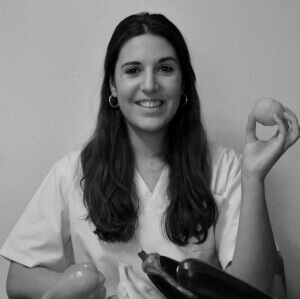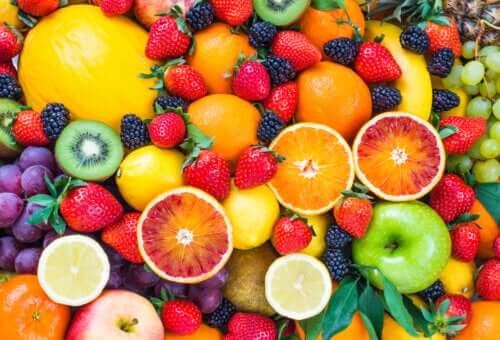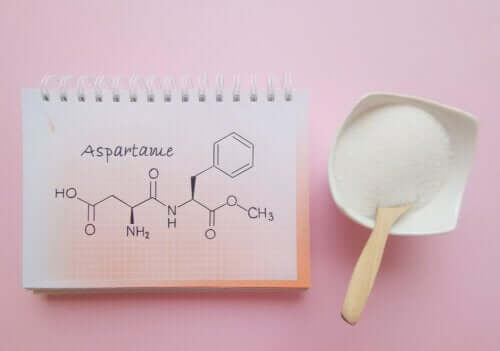Nutritional Management of Phenylketonuria


Written and verified by the nutritionist Lucía Corral
Phenylketonuria, also known as PKU, is a congenital metabolic disorder. The impact and the disease progression will depend on when doctors diagnose it. The sooner they discover it, the better it’ll be for the patient. In today’s article, we’ll talk about the nutritional management of phenylketonuria.
Congenital metabolic disorders
These type of disorders, like phenylketonuria, are due to genetic alterations. In addition, these genetic alterations are responsible for enzyme defects, which result in the accumulation of toxic metabolites. These disorders usually appear during childhood. However, there are many variations regarding their appearance and progress.
Many congenital errors respond to nutritional management. In fact, nutritional management helps reduce toxic metabolites and make up for nutrient and micronutrient deficiencies that may appear due to this pathology.
Phenylketonuria
Phenylketonuria leads to the accumulation of an amino acid (phenylalanine) in blood. An early diagnosis is essential, because the effects of phenylalanine excess (intellectual and psychomotor disability) are irreversible. For this reason, this has been included within neonatal screening tests since the 20th century.

Nutritional management of phenylketonuria
Phenylketonuria treatment aims to maintain the proper levels of phenylalanine, in order to promote the patient’s growth and development. The type of intervention will depend on the enzyme residual activity. Therefore, each treatment must be individual. Even though nutritional management is essential in this case, there are other kinds of treatments as well.
Nutritional management
This is the most important treatment. Since this disorder requires controlling protein levels, there are some general principles to follow:
- Patients should avoid long periods of fasting.
- They should avoid protein-rich foods, in order to limit the level of phenylalanine. This level will depend on each patient’s tolerance. To ensure the corresponding protein levels, patients must take a special phenylalanine-free formula.
- It’s important for patients to obtain the amount of calories required (according to age, weight and sex), in order to develop properly.
- It’s also important to remember the basic principle of nutrition: variety. Different foods and cooking methods are always a good choice. Besides, there are many types of food low in protein.
Applying concepts
To follow a low-phenylalanine diet, it’s important to limit protein-rich food in general, and specifically limit amino acids. But before talking about what’s not allowed, let’s see what patients can have.
PKU diet
It’s not necessary to control fruit and vegetable consumption. In fact, this can be an advantage mostly because of their variety. Other products low in phenylalanine are cornstarch and tapioca. People with celiac disease often consume cornstarch, and there are many recipes to follow.
When cooking, patients can use fats and vegetable oils. However, the best choice is extra virgin olive oil. Among fats, they can use dairy-free butters and margarines.
Finally, there are many products that people can consume, but they’re not widely recommended. These products are sugar, jam, honey, syrup, and condiments, like vinegar and mustard. As for beverages, the best choice will always be water, but they can also have certain sodas.

Food products to eat less
The list of forbidden food products is very long. However, like we’ve mentioned before, it’ll depend on each patient’s tolerance. Something most of them have in common is the low tolerance to proteins. For this reason, creating a chart to evaluate the nutritional value of food will make this process easier.
For example, 0.88 ounces of milk contain 1.7 ounces of phenylalanine. Therefore, if a person tolerates 21 ounces of phenylalanine a day, they can adapt their diet using the chart.
Besides proteins, patients shouldn’t have bread, flour and cookies. In fact, they can also find information about PKU products that are low in protein on the internet.
Finally, light (or low-calorie) foods and drinks aren’t recommended, because they contain one of the most common sweeteners: aspartame.
In the following website, you’ll find many recipes and advice for people who suffer from phenylketonuria.
Phenylketonuria, also known as PKU, is a congenital metabolic disorder. The impact and the disease progression will depend on when doctors diagnose it. The sooner they discover it, the better it’ll be for the patient. In today’s article, we’ll talk about the nutritional management of phenylketonuria.
Congenital metabolic disorders
These type of disorders, like phenylketonuria, are due to genetic alterations. In addition, these genetic alterations are responsible for enzyme defects, which result in the accumulation of toxic metabolites. These disorders usually appear during childhood. However, there are many variations regarding their appearance and progress.
Many congenital errors respond to nutritional management. In fact, nutritional management helps reduce toxic metabolites and make up for nutrient and micronutrient deficiencies that may appear due to this pathology.
Phenylketonuria
Phenylketonuria leads to the accumulation of an amino acid (phenylalanine) in blood. An early diagnosis is essential, because the effects of phenylalanine excess (intellectual and psychomotor disability) are irreversible. For this reason, this has been included within neonatal screening tests since the 20th century.

Nutritional management of phenylketonuria
Phenylketonuria treatment aims to maintain the proper levels of phenylalanine, in order to promote the patient’s growth and development. The type of intervention will depend on the enzyme residual activity. Therefore, each treatment must be individual. Even though nutritional management is essential in this case, there are other kinds of treatments as well.
Nutritional management
This is the most important treatment. Since this disorder requires controlling protein levels, there are some general principles to follow:
- Patients should avoid long periods of fasting.
- They should avoid protein-rich foods, in order to limit the level of phenylalanine. This level will depend on each patient’s tolerance. To ensure the corresponding protein levels, patients must take a special phenylalanine-free formula.
- It’s important for patients to obtain the amount of calories required (according to age, weight and sex), in order to develop properly.
- It’s also important to remember the basic principle of nutrition: variety. Different foods and cooking methods are always a good choice. Besides, there are many types of food low in protein.
Applying concepts
To follow a low-phenylalanine diet, it’s important to limit protein-rich food in general, and specifically limit amino acids. But before talking about what’s not allowed, let’s see what patients can have.
PKU diet
It’s not necessary to control fruit and vegetable consumption. In fact, this can be an advantage mostly because of their variety. Other products low in phenylalanine are cornstarch and tapioca. People with celiac disease often consume cornstarch, and there are many recipes to follow.
When cooking, patients can use fats and vegetable oils. However, the best choice is extra virgin olive oil. Among fats, they can use dairy-free butters and margarines.
Finally, there are many products that people can consume, but they’re not widely recommended. These products are sugar, jam, honey, syrup, and condiments, like vinegar and mustard. As for beverages, the best choice will always be water, but they can also have certain sodas.

Food products to eat less
The list of forbidden food products is very long. However, like we’ve mentioned before, it’ll depend on each patient’s tolerance. Something most of them have in common is the low tolerance to proteins. For this reason, creating a chart to evaluate the nutritional value of food will make this process easier.
For example, 0.88 ounces of milk contain 1.7 ounces of phenylalanine. Therefore, if a person tolerates 21 ounces of phenylalanine a day, they can adapt their diet using the chart.
Besides proteins, patients shouldn’t have bread, flour and cookies. In fact, they can also find information about PKU products that are low in protein on the internet.
Finally, light (or low-calorie) foods and drinks aren’t recommended, because they contain one of the most common sweeteners: aspartame.
In the following website, you’ll find many recipes and advice for people who suffer from phenylketonuria.
All cited sources were thoroughly reviewed by our team to ensure their quality, reliability, currency, and validity. The bibliography of this article was considered reliable and of academic or scientific accuracy.
- MacLeod E et al. (2010). Tratamiento nutricional de la fenilcetonuria. Ann Nestlé (Esp); 68: 60-71.
- Hafid NA et al. (2015). Phenylketonuria: a review of current and future treatments. Transl Pediatr;4 (4): 304-317
- Fenilcetonuria o PKU – Nutricia. (2016). Nutricia.es. 2016.
- Martínez Zazo AB, Pedrón Giner C. (2017). Manual para la alimentación de pacientes con errores innatos del metabolismo. Documentos SEGHNP.
This text is provided for informational purposes only and does not replace consultation with a professional. If in doubt, consult your specialist.








